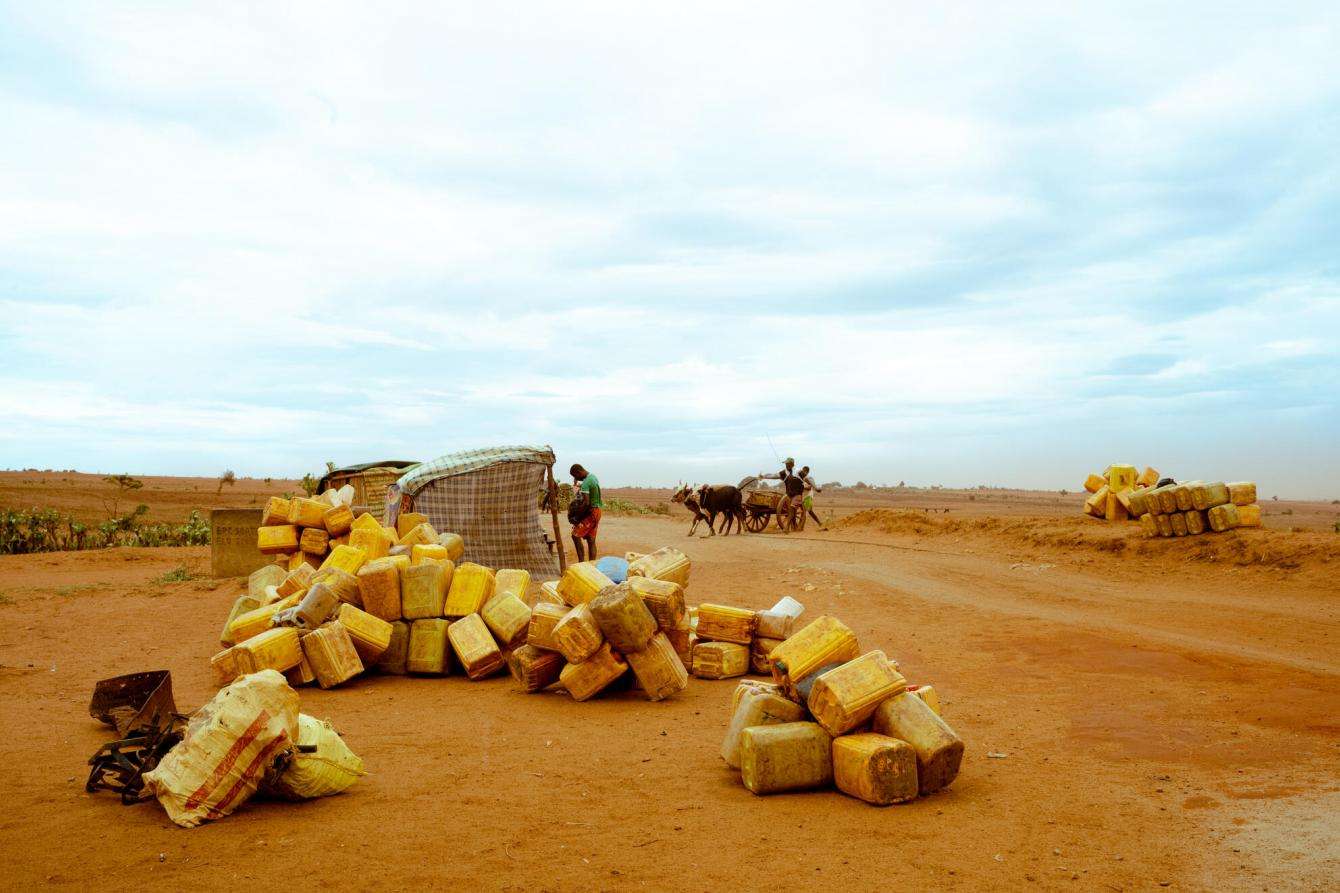This year, more than any other, the southeastern regions of Madagascar are suffering from drought and a prolonged lack of rain. In an area where most people rely on farming for food and income, the dry spell’s effect on the harvest has been devastating. It's the “kéré,” as the locals say, a term describing the lack of food and hunger.
“If the season is good, we grow rice and sweet potatoes,” said Mandilsoa, chief of the Kapila fonkontany (village) in Ranobe commune. “But there has been no rain for the last three years, so we can't cultivate anything. We hope that the rain will come, otherwise we will die.”
Since the end of March 2021, Doctors Without Borders/Médecins Sans Frontières (MSF) has been running mobile clinics in three communes of Madagascar’s Amboasary district in the southern Anosy region, including Ranobe. We’re focusing on screening and treating people for severe and moderate acute malnutrition.
Bringing treatment to those in need

“For the inhabitants of Ankamena, in the commune of Ranobe, the first functional health center is a half-day's walk away,” said Julie Reversé, MSF emergency coordinator in Madagascar. “For these weakened communities, lacking everything, the priority is to find something to drink and eat, neglecting health.” MSF chose to launch mobile clinics in this region based on isolation, poor access to care, and vulnerability of the communities.
On consultation days, hundreds of people come to the mobile clinic. People of all ages are screened, examined, and, depending on their health, admitted to the nutritional program set up by MSF. Patients suffering from acute malnutrition receive systematic treatment and Plumpy’Nut therapeutic food, an enriched peanut paste. “Because of the urgency of the situation, we have implemented a simplified protocol for the management of acute malnutrition. Each patient is monitored every two weeks,” said Reversé.

“So far, in the three communes where we work, we have screened 4,674 people and admitted 1,136 patients to our program [as of April 13], including 831 children under the age of five,” said Anne Tilkens, MSF emergency medical coordinator in Madagascar. “Among these children, about a third suffer from severe acute malnutrition, and two-thirds from moderate acute malnutrition.”
Health consequences
Malnutrition leads to a weakened immune system, leaving those affected particularly vulnerable to other illnesses. “We note a significant number of cases of parasitosis [diseases caused or transmitted by parasites], schistosomiasis [a chronic disease caused by parasitic worms], and diarrheal and skin diseases,” said Tilkens. “We also see patients suffering from respiratory infections and conjunctivitis. Currently, we are noticing an increase in cases of malaria.”
One of the causes of these associated diseases is the quality of what little water is available. Often, people have to walk for hours to find water. “We depend on rainwater and river water for drinking,” said Zafimbora, who came to MSF’s mobile clinic in Ambovo, Marotsiraka commune, with her six-month-old child who was suffering from moderate acute malnutrition. “Since it hasn't rained enough, we go to the Zakafia River. We have to leave early in the morning, on foot, to be able to come back before sunset.”

In addition to the clinics, MSF is also launching water, hygiene, and sanitation activities to improve access to and quality of water where our teams work. These efforts include distribution of jerrycans for carrying water, repair of hand pumps, and water trucking, among other activities.
“In the context of acute food insecurity as experienced in the Amboasary district, categorized as an emergency by the Integrated Food Security Phase Classification (IPC), medical treatment of malnutrition is not enough to save the most vulnerable,” said Reversé. “Ensuring that households have sufficient resources to feed themselves is one of the key elements for the success of nutrition programs. This is why we are currently looking at the possibility of complementing other actors in the area to strengthen food distribution for the benefit of people affected by malnutrition.”




